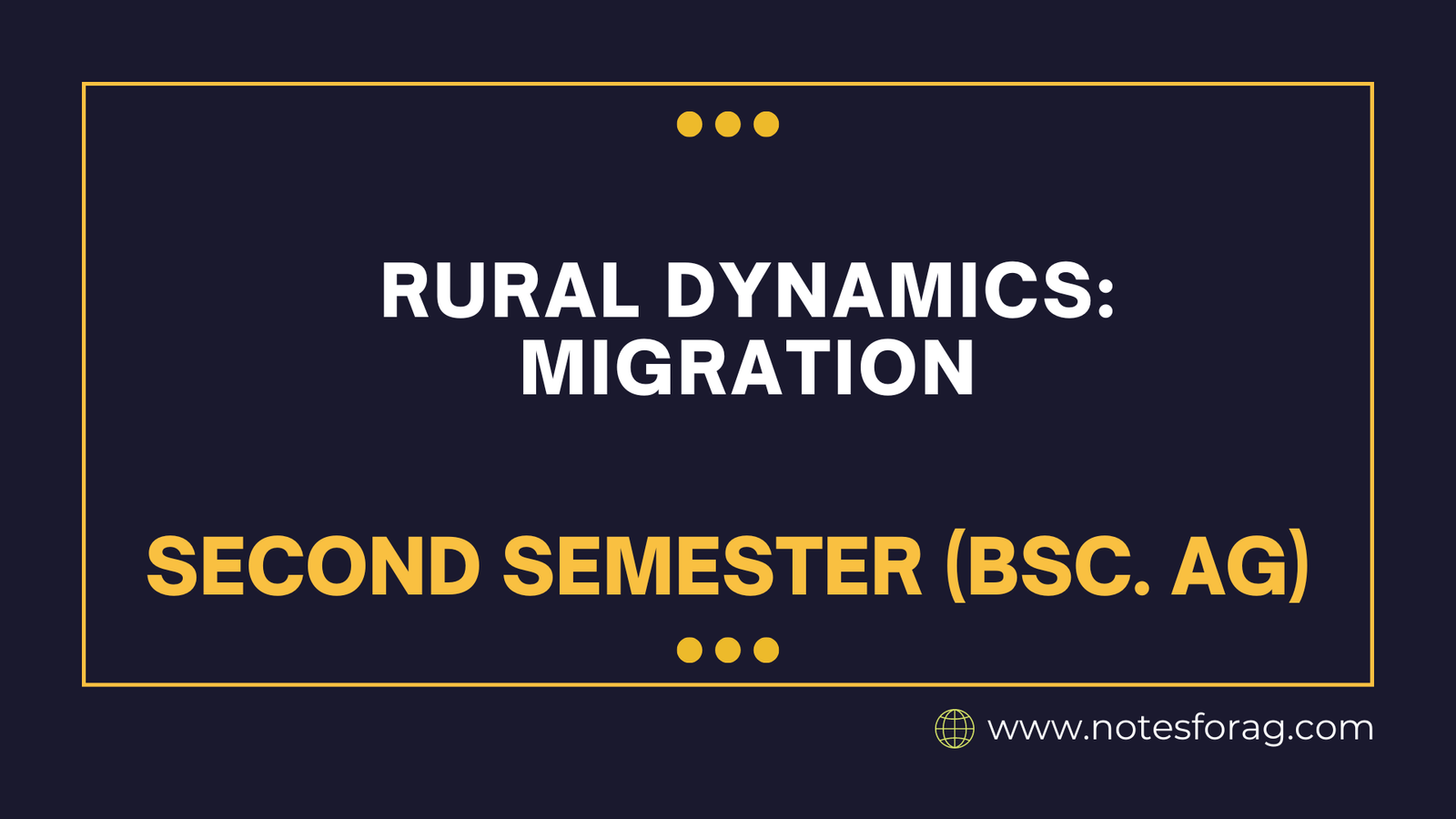Migration and rural dynamics include the trends and outcomes of individuals relocating from rural to urban areas. A number of reasons, including the desire for better living conditions, access to education, and work prospects, frequently motivate this migration. The rural communities of origin and the urban areas of destination are both greatly impacted by the movement. While labor shortages and depopulation may affect rural areas, urban centers frequently face issues with resource allocation and higher population densities. For the purpose of creating policies that address the needs and difficulties faced by both urban and rural populations, it is imperative to comprehend rural dynamics.
Table of Contents
Introduction to Rural dynamics: Migration

Migration, the movement of people from one place to another, is a defining feature of rural dynamics. It shapes the social, economic, and demographic landscape of rural areas. Here, we delve into the various factors driving rural migration, its impact on both sending and receiving areas, and potential strategies to address its challenges.
Push and Pull Factors: Why People Leave Rural Areas
The decision to migrate from a rural dynamics is rarely simple. Often, a combination of “push” and “pull” factors come into play:
Push Factors: These factors compel people to leave their rural homes due to challenges and limitations:
- Limited Economic Opportunities: Rural dynamics often have fewer job options compared to urban centers. Low wages, lack of diversification in industries, and seasonality of agricultural work can push people to seek employment opportunities elsewhere.
- Lack of Infrastructure and Services: Rural dynamics may lack access to quality education, healthcare, transportation, and other essential services. This can be particularly detrimental for young people seeking educational advancement or families seeking better healthcare options.
- Environmental Degradation: Factors like droughts, floods, soil erosion, and climate change can threaten livelihoods and food security in rural areas, pushing people to migrate to more stable environments.
- Social Conflict and Violence: Rural dynamics can be more susceptible to conflicts over resources like land and water. Violence can further disrupt livelihoods and create a sense of insecurity, driving migration.
Pull Factors: These factors attract people to urban centers, offering perceived advantages:
- Job Opportunities: Cities offer a wider range of job opportunities with potentially higher wages. This can be particularly attractive to young people seeking career advancement and upward mobility.
- Education and Training: Urban areas often have better access to educational institutions and job training programs, offering opportunities for skill development and career advancement.
- Better Amenities and Services: Cities offer a wider range of amenities, including healthcare facilities, entertainment options, and better transportation infrastructure. This can be a significant pull factor for families seeking a higher standard of living.
- Social Networks: The presence of family and friends in urban areas can make migration seem less daunting and offer a sense of social support.pen_spark
The Impact of Migration
Migration has a complex impact on both sending and receiving areas:
Impact on Rural Areas:
- Loss of Young Talent and Labor Force: Migration can lead to a brain drain, as young people with education and skills leave for better opportunities. This weakens the agricultural sector and hinders rural development initiatives.
- Aging Population: Out-migration can lead to an aging population in rural areas. This can put a strain on social services and healthcare systems designed for younger populations.
- Declining Social Cohesion: Migration can weaken social networks and community life in rural areas. This can lead to a sense of isolation and a decline in cultural traditions.
Impact on Urban Areas
- Strained Infrastructure: Rapid urbanization can put a strain on urban infrastructure, including housing, public transportation, and sanitation systems.
- Social Challenges: Migration can lead to increased social inequalities and tensions in urban areas. Newcomers may struggle to integrate and access essential services.
Strategies for Managing Rural Migration
To address both the challenges and opportunities of rural migration, several strategies can be considered:
- Investing in Rural Development: Investing in rural infrastructure, education, healthcare, and job creation can make rural areas more attractive places to live and work. This can help retain talent and encourage young people to stay.
- Promoting Sustainable Agriculture: Supporting sustainable farming practices and promoting agricultural diversification can create more income opportunities and improve food security in rural areas.
- Enhancing Rural-Urban Linkages: Fostering stronger linkages between rural and urban areas can ensure migrants maintain connections to their hometowns and potentially invest back into rural development initiatives.
- Migration Management Policies: Implementing policies that facilitate orderly migration, such as skills development programs for rural populations, can help ensure migrants have the skills and resources to succeed in urban areas.
Rural migration is a complex phenomenon with far-reaching consequences. By understanding the push and pull factors, its impact on sending and receiving areas, and implementing effective strategies, we can work towards managing rural dynamics migration in a way that benefits both rural and urban populations.
Frequently Asked Question(FAQ)
What is rural-urban migration?
The term “rural-urban migration” describes the movement of people from rural to urban areas in quest of better living conditions overall, better employment opportunities, and access to healthcare and education.
What are the environmental impacts of rural migration?
While urban areas may experience increased pollution, problems with waste management, and strain on natural resources, rural migration can result in land abandonment and degradation in rural areas.
Related Articles

